Reviews
The Mansion
Kamal Amrohi
India, 1949
Credits
Review by Michael Nordine
Posted on 29 October 2011
Source Music India DVD
Categories 31 Days of Horror VIII
I watched a lot of horror movies as a kid, but rarely by choice. My weekly descents into the grotesque and supernatural most often came at the behest of my dad - a lifelong horror junkie as taken by Polanski as he is by Phantasm - and my older sister. As the youngest, my fearfulness was often made light of, with the most notable incident occurring the morning after the three of us watched The Omen. My memory of the incident isn’t entirely clear, but I vaguely recall feeling a tickling sensation on my ear while someone - or something - giggled somewhere behind me. I brushed it off in my half-awake state, but later, once I’d woken up and seen my reflection in the mirror, I noticed something scrawled on my earlobe in black marker: 666. My dad and sister, who’d done their best to act innocent, immediately betrayed their guilt by laughing hysterically.
All was well and good until some months later, when the three of us watched The Shining on rented VHS (this was pre-DVD by a few years). Kubrick’s was the film that changed the way I thought about horror. I barely slept that night and, for the next several years, swore off such films altogether. This ended sometime in my teens - probably, I hate to admit, around the time Freddy vs. Jason was released - and since then I’ve actively sought out good horror movies. All of which is a long way of saying that, when it came to my attention that Bollywood horror not only exists but thrives, my interest was immediately piqued. Kamal Amrohi’s Mahal, widely recognized as the first entry in the genre, was among the most financially successful films of 1949 in its native country and its influence can still be felt today. A ghost story centered around a lost love that haunts the old, lonely house that once hosted it, it’s also a kind of thriller. Linking these competing impulses is an inquiry of reincarnation, of the attempt at reconciling one’s current life with those of the past: Hari, the main character, is at one early point exiting the front room of his newly-inherited mansion when a portrait of a man bearing a striking resemblance to himself falls off the wall and nearly crushes him. “Is this a second birth?” he asks, believing himself to be the reincarnated form of the man whose faces so resembles his own.
Mahal is a film of long questions and slow answers. To meander through this mansion with seeming aimlessness is, in effect, the only way for Hari to gradually uncover - or perhaps just stumble upon - the truth, and so moments of revelation are treated as eventualities rather than overdramatized shocks. Unfolding over nearly three melancholy hours, the film further differs from the typical haunted house story in that its protagonist has no desire to leave. Really, he’s enthralled; there’s something to the place that draws Hari deeper into its mystery, linked as it is to his understanding of his own identity, and the fact that he can never quite put his finger on either only provokes further inquiry. He’s ensnared not only by the portrait but also by the call of Kamini, the ghostly presence within the palatial home and, he believes, the object of his past affection. Cinema often treats love as a mortality-defying force, but the budding romance between these two is by turns understated and grandiloquent in such a way that it actually carries the weight we’re asked to believe it does. Fear grips Hari as he attempts to understand just who or what he has encountered, but he’s compelled to go on. This tension between romance and suspense, the need to know and the fear of what might be uncovered, defines Mahal.
There’s also singing—lots of it. Mahal asks for 165 minutes of your time, and nearly half of it seems to be taken up by one repeating song: “Aayega Aanewaala” (or, in English, “He Will Come”). This acts as a summons, even a mating call, to Hari from Kamini. In helping him remember who he is, it also lights the way for who he must become. While occasionally trying one’s patience - when I say that the song is repeated, I mean the entire song is repeated several times - it ultimately carries with it the effect of proving the notion that past is indeed prologue. So, while Mahal certainly has its moments of suspense and draws on other elements of horror as well, these setpieces are ultimately in service of the central love story. This all unfolds with such airiness it’s almost ethereal—think of it as the Indian equivalent of The Ghost and Mrs. Muir, not only in terms of subject matter but also as regards the ways in which discovering one another helps the characters better comprehend themselves. Hari is drawn to Kamini not only her siren-like song but also by his subconscious knowledge that he, too, is not entirely of this earthly world; the two are presented as wandering souls who, despite their beyond-the-grave attempts to reunite, have been repeatedly thrust away from one another. This is their tragedy, but it’s also what strengthens their bond.
Despite involving a return to a former state, Mahal rarely feels deterministic in the way it completes its own circle. Largely due to the hefty runtime and glacial pacing, there is a free-floating quality to the proceedings that’s in keeping with the otherworldly notions which birthed the story in the first place. In many ways, this is what saves Mahal from being mired in self-importance, as well as what finally brings to mind the genre to which it partially belongs—we become part of its world without being wholly bound by its rules.
More 31 Days of Horror VIII
-

Westworld
1973 -

Child’s Play
1988 -

Jacob’s Ladder
1990 -
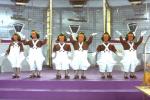
Willy Wonka and the Chocolate Factory
1971 -
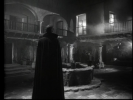
El Vampiro
1957 -
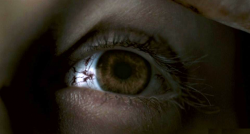
28 Weeks Later
2007 -

Piranha II: The Spawning
1981 -
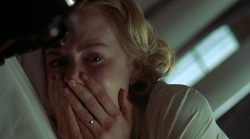
The Others
2001 -
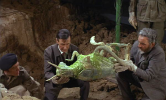
Quatermass and the Pit
1967 -

I Know Who Killed Me
2007 -

Bride of Re-Animator
1990 -

Alucarda
1978 -
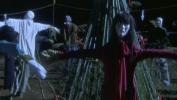
Kakashi
2001 -

Seizure
1974 -

Night of the Living Dead
1968 -
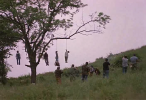
Night of the Living Dead
1990 -

The Bat Whispers
1930 -

Miracle Mile
1988 -

Tintorera
1977 -

Paradise Lost
1996 -

The Cars that Ate Paris
1974 -

Ginger Snaps
2000 -
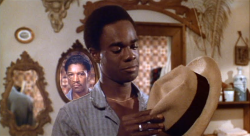
J.D.’s Revenge
1976 -

The Wicker Man
2006 -

Black Water
2007 -

Don’t Panic
1988 -

The Driller Killer
1979 -

Targets
1968 -

Mahal
1949 -
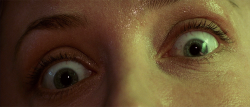
Event Horizon
1997
We don’t do comments anymore, but you may contact us here or find us on Twitter or Facebook.



